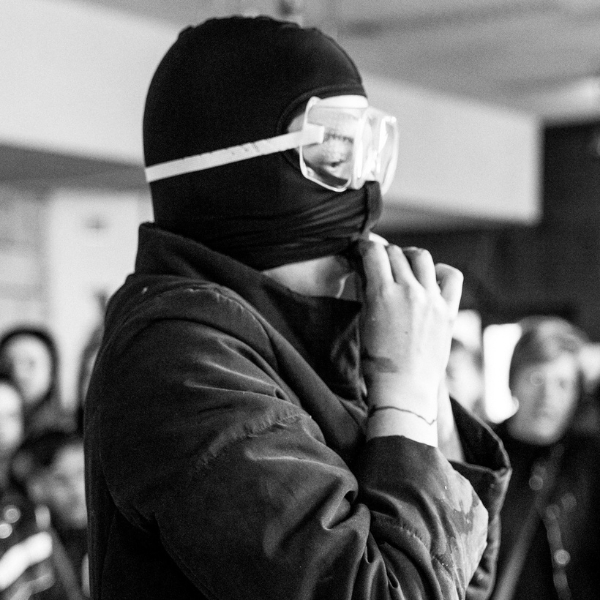
Depy Antoniou was born in 1996, in Volos (Greece), and currently lives in Leeuwarden (the Netherlands). Her main media focus is on video performance, installations and sound design. She uses the installation as a link between space and the performer. Repetition and rhythm are elements that are incorporated in her work, with an intention to create heterotopian spaces. The production of a document during the execution of an action, and in particular a video, is something that she always chooses to create an archival coverage, in order to prove and re-present the action that had happened on specific time.
Exhibitions
- “Asimi” live performance, Thessaloniki Queer Arts Festival 2018
- “Asimi” video performance, Platforms Project Athens 2018
- ECHO residency in Novi Sad (Serbia), researching and creating artistic work. “Dark Heritage” group exhibition Svilara – Kulturna stanica, Novi Sad (Serbia), and Veliki Preslav (Bulgaria) 2018-2019
- “Dive” video performance, “Urgent Conversations” group exhibition Cookhouse Gallery, UAL College of Arts, London, 2019
- “Beautification Room” FE MALE Home” Online Performance Festival, 2020
Education
- Student of the University of Western Macedonia, Florina (Greece), Department of Fine and Applied Arts, 10th semester of studies
- European Erasmus+ programme at the NHL Stenden University, Leeuwarden (the Netherlands), 1/2/2020 – 1/7/2020
- Artistic Practice course of OPEN ART, a Lifelong Learning programme of the Ionian University (Greece) in collaboration with the Athens Digital Arts Festival
- Arduino, Open Technologies in the Arts Interactive Arts and Performance, Body, Time & Space, Art in the Information Age, 1/6/2020 – 31/7/2020
Participation in ECHO I
Depy participated in the Art Residency that took place in Novi Sad (Serbia) from 22 October 2018 to 22 November 2018, and focused on the local events of the Second World War (Novi Sad Raid) and their impact in the local community.
The ECHO Residency was a rewarding and unique experience. Staying with the rest of the participating artists in a shared space was an inspirational endless conversation. We had the opportunity to meet Novi Sad through researching and working on the historical field of Vojvodina. The local organisation brought us in contact with people from different disciplines, who gave us information to develop our work, and contribute to an intersectional approach that would end in a visual outcome. Our work was exhibited with the help of all the organisations in Novi Sad (Serbia), and Veliki Preslav (Bulgaria), but also presented in Athens (Greece).